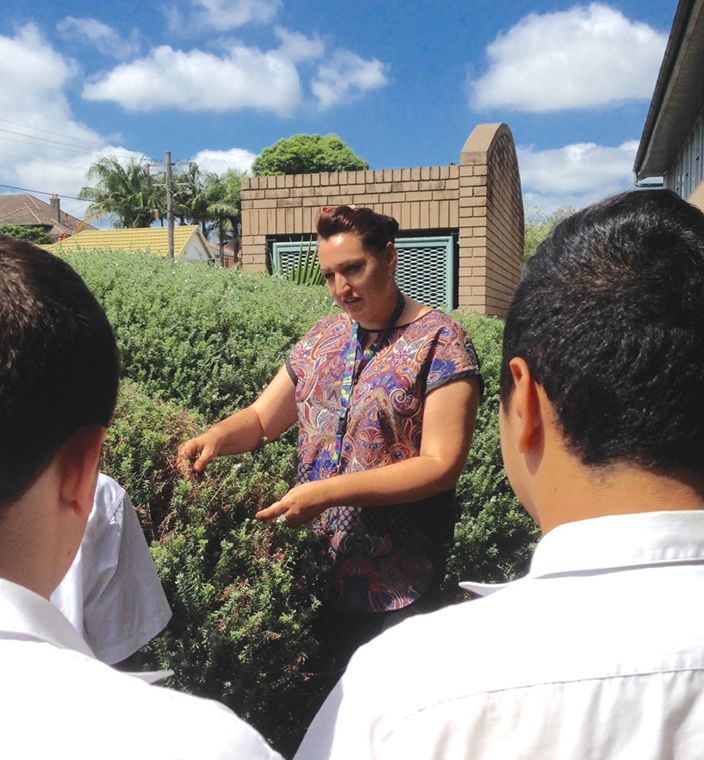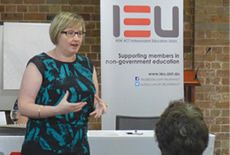
More than 20% of teachers experience voice problems each year, according to research conducted in Australia and around the world (Smith, Lemke and Taylor, 1998).
Primary school teachers are more likely to report voice problems and these problems are more common among female teachers than male (Russell, Oates & Greenwood 1998).
Most schools and education systems do provide teachers with training materials about voice care. However, these training materials are devised for teachers in normal sized classrooms. There has been little work done into alleviating the increased strain placed on teachers’ voices when they are working in the large learning spaces that are becoming more popular in some schools and systems.
Kata Collimore (pictured above), a teacher from Delany College Granville, knows exactly what kind of strain teaching in large spaces can place on a teacher’s voice. She has been working in the open plan classrooms (the Connective) at Delany College for the last two years, and over that time she has developed vocal nodules due to raising her voice in the larger space.
She has had to raise her voice to communicate across the larger rooms, and also to communicate with the larger than normal numbers of students. As a result, Kata has had to attend speech therapy every week, and also have regular appointments with an ear, nose and throat specialist to monitor the nodules.
Kata submitted a workers compensation claim, and Catholic Church Insurance (CCI) accepted provisional liability. Kata was then required to attend an independent medical assessment. The doctor at the assessment wrote a report about her injury. CCI eventually accepted full liability, which means that they will cover the expenses Kata has or will incur related to this injury. It also means that she will not have to use her personal leave should she need an operation to remove the nodules.
“It was a frustrating experience,’ Kata said. “The school did their best to help me, but I was worried about the expenses I had incurred by visiting specialists. It took a long time too – I made my initial claim in October, and I didn’t hear from CCI until December.”
The prevalence of agile learning spaces might mean that more and more teachers will be at risk of developing additional voice problems. The IEU runs PD sessions about voice care. See the PD calendar here http://www.ieu.asn.au/pd-meetings/ for more information.
If you are suffering from a voice problem and would like assistance with making a worker’s compensation claim, contact your organiser.
References
Russell A Oates, J Greenwood K 1998 Prevalence of Voice Problems in Schoolteachers, Journal of Voice 12
Smith E, Lemke J, Taylor M, 1998 Frequency of Voice Problems among Teachers and other Occupations. Journal of Voice 12










































































































































